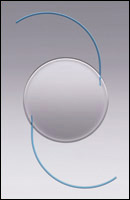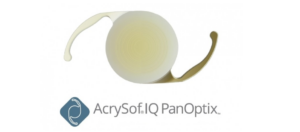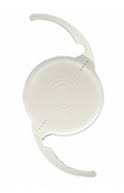Should You Choose a Premium IOL?in Boston, MA

When you are considering cataract surgery, you’ll need to talk to your ophthalmologist about what kind of intraocular lens (IOL) to get before undergoing the procedure. During cataract surgery, your natural lens will be removed and replaced with an artificial lens.
This artificial lens, or IOL, comes in several varieties. Since there are so many different kinds of IOLs to choose from, it can get a little overwhelming.
But you can start by talking to your eye doctor and asking for their recommendations. You can also decide for yourself if a premium IOL is something you may want.
Keep reading to learn more about the differences between intraocular lenses and if a premium IOL could be the right choice for your lifestyle and visual needs!
Premium IOLs vs. Standard Monofocal IOLs
For people with cataracts, cataract surgery is usually deemed medically necessary to restore or prevent further vision loss. Because of this, the procedure is generally covered by most insurance plans.

But the cost of cataract surgery only includes the price of a standard IOL. This IOL is called a monofocal lens, and it’s a simple, uniform intraocular lens that’s set to one refractive power to see within one focal point.
Some patients choose to have their monofocal lenses combined to create something called monovision. Monovision means that you have one monofocal lens placed in one eye for seeing up close, and then in the other eye, there’s another monofocal lens placed for seeing far away.
With monovision, patients can see decently at intermediate distances, but they will probably require glasses and reading glasses if they want clear, up-close vision.
Premium lenses don’t come with cataract surgery, so if you have interest in them, they will cost you money out-of-pocket. However, this expense is well worth many of the benefits that premium IOLs offer, if you can afford it.
Choosing a premium IOL means you can reduce your dependence on glasses after cataract surgery. What’s more, you can see well at several distances, instead of only one focal point like what the monofocal lens offers. Premium IOLs come in many different forms, each with individual and unique benefits worth considering.
The Options
Here are the premium IOLs we offer at Nielsen Eye Center:

Diffractive Multifocal IOL:
A multifocal IOL is a lens composed of alternating refractive powers rather than a uniform lens. The Multifocal lenses are made up of rings extending out from the center of the lens, switching between a close focal point and a distant one.
Wearing a multifocal lens trains your brain to look through the correct ring, depending on what you’re seeing. This allows the user to focus better up close, often eliminating the need for reading glasses.
The multifocal IOL also reduces the visual aberrations common in some IOLs, leading to fewer post-surgical visual problems.

Trifocal Lens
The trifocal lens is the only FDA-approved trifocal lens. The trifocal IOL provides patients with excellent distance vision, as well as clear vision when looking at things at an intermediate distance (arm’s length) and up close.
Vision with the lens is clearer, brighter, and sharper, so you’ll experience the world around you as it was always meant to be seen. The trifocal IOL also corrects your vision, meaning you’re less likely to rely on glasses after cataract surgery.

EDOF
The extended depth of focus (EDOF) IOL intraocular lenses use technology that’s based on an elongated focal point. With an elongated focal point, patients can finally have the freedom they want from their reading glasses.
The EDOF lens provides wearers with excellent distance vision without sacrificing intermediate sight, which is necessary for tasks like working on a computer or texting on a smartphone.

Toric IOL
Toric IOLs are the only IOLs designed to correct astigmatism. Astigmatism occurs when the eye is a football shape instead of a rounder basketball shape.
Toric IOLs work by offsetting this shape with how it’s aligned when the lens is implanted in the eye. While a toric IOL may not correct all kinds of astigmatism completely, it can correct prescriptions up to 4 diopters.
Choosing the Right IOL for You

For some people, monofocal IOLs are a perfectly acceptable option. But if you have the means and want to get the most out of cataract surgery, a premium IOL is worth considering.
When it comes to choosing which premium IOL you want, there are a few questions you can ask yourself that may help:
- What is your budget?
- Do you have mild or moderate astigmatism and wish to correct it?
- Are you okay using reading glasses after having cataract surgery?
- What are your main daily activities?
- Do they require more up-close work, or do you need to see well at a distance?
Thinking about these questions’ answers can help you figure out which premium IOL will work best for you. You can, and should, also talk to your eye doctor about their recommendations.
They can help you navigate the more subtle differences between IOLs and give you their recommendation based on your visual needs and lifestyle. Whatever you decide, remember that you’re investing in your long-term vision. Do what makes sense for you and your needs.
Looking to learn more about premium IOLs before having cataract surgery? Schedule a cataract screening at Nielsen Eye Center in Boston, MA, today!
Our Patient Advocates are patiently waiting by the phone to answer your questions! Give us a call at 617-471-5665 now!



